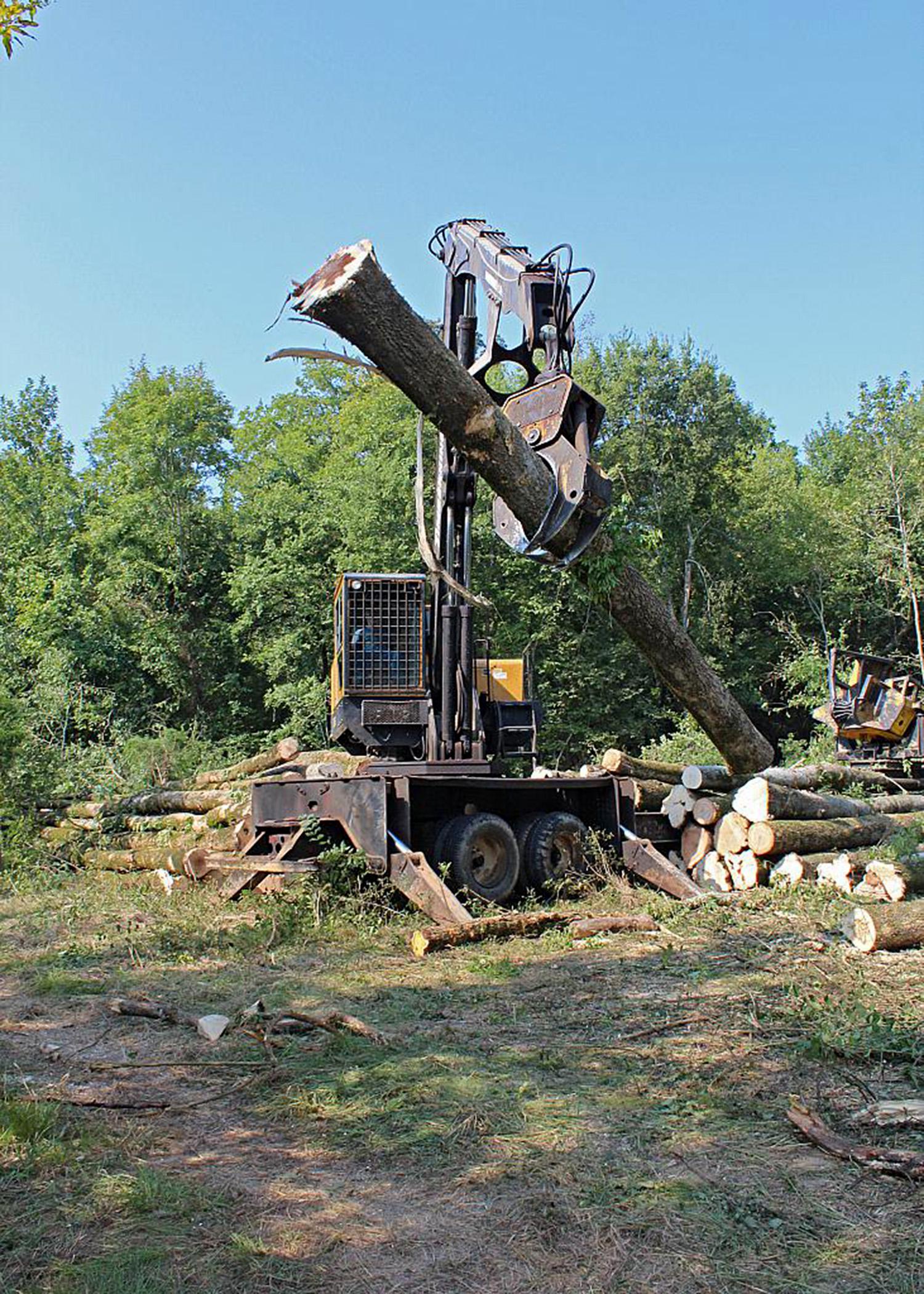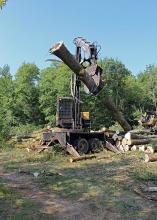Information Possibly Outdated
The information presented on this page was originally released on December 19, 2013. It may not be outdated, but please search our site for more current information. If you plan to quote or reference this information in a publication, please check with the Extension specialist or author before proceeding.
2013 forest products values improve, gain momentum
MISSISSIPPI STATE – Mississippi’s forest products bounced back into the No. 2 spot in the state’s list of agricultural commodities based on annual production values.
James Henderson, associate Extension professor in the Mississippi State University College of Forest Resources, estimated the state’s forest products 2013 harvest value to be $1.17 billion, compared to the 2012 value of $1.02 billion. That is a 14.6 percent increase over the 2012 harvest. Final figures will be available in February.
Notably, the 2013 harvest value is 34.9 percent higher than the 2009 harvest value of $864.9 million, which was the lowest valued harvest year since the recession of 2007 to 2009.
“The increase can be attributed to several factors, including an increase in timber harvesting because of slightly higher prices,” Henderson said. “Severance taxes collected on timber sales are up 4.4 percent as of October, compared to the same period for 2012.”
Henderson reported stumpage for pine pulpwood is up 19.9 percent, hardwood pulpwood is up 32.6 percent, pine sawtimber is up 4.2 percent, oak sawtimber is up 11.6 percent and mixed hardwood sawtimber is up 11.6 percent.
The demand for Mississippi’s forest products is tied to the U.S. housing market, especially new home construction. Though the recent spike in mortgage interest rates cooled the housing market somewhat, Henderson expects continued growth in the housing market and the overall economy.
“The trend remains positive -- housing starts are 19 percent higher than this time in 2012,” he said.
Existing and new home sales are also on an upward trend. Compared to the end of 2012, existing home sales are up 11 percent and new home sales are up 13 percent.
With inventories of homes for sale still below those typically found in a healthy housing market, new home construction is expected to increase in 2014.
Henderson said the closure of the International Paper mill in Courtland, Ala. has implications for the pulpwood market in north Mississippi.
“Given the capacity of the International Paper mill, demand in part of north Mississippi probably will be cut by at least half,” Henderson said.
David Jones, forest products specialist with the MSU Extension Service and associate professor in the MSU Forest and Wildlife Research Center’s Department of Sustainable Bioproducts, said he expects 2014 to be on par with 2013.
“2013 has been good for forest products, an upswing year, and I expect to see a continual increase in the state’s lumber production,” Jones said. “We had a couple of mills close, but one is scheduled to reopen in 2014 after a change in ownership.”
The biofuels industry remains an unknown factor.
“No one is sure what the impact of the biofuels industry will be, other than the creation of some additional jobs,” Jones said. “A couple of biofuels companies are entering the market in the state, and they started construction and research in 2013. They may be up and operating by mid-2014.”
An increase in domestic demand fueled the industry in 2013, while the export market remained stable. Jones said most of the export growth has been in the Asian markets.
“We sold some logs to China early in 2013, but it’s not as big of a market for us as for the West Coast because of transportation costs,” he said. “Many Asian countries are starting to use more wood in their construction practices, so we may see more growth in that sector.”
As with other agricultural products, weather will determine the next few months’ activity.
“Mills are keeping appropriate amounts of inventory in stock now, but we could see a repeat of what happened in early 2013, when it was too wet for loggers to get trees out of the woods and sawmills had to shut down,” Jones said. “So we’ll be watching the weather to see if the hardwood mills can sustain lumber production through the winter.”
Forest products have been listed in the top three most valuable agricultural commodities in the state for more than 25 years. This year forest products are second only to the poultry industry’s $2.72 billion predicted year-end value.


